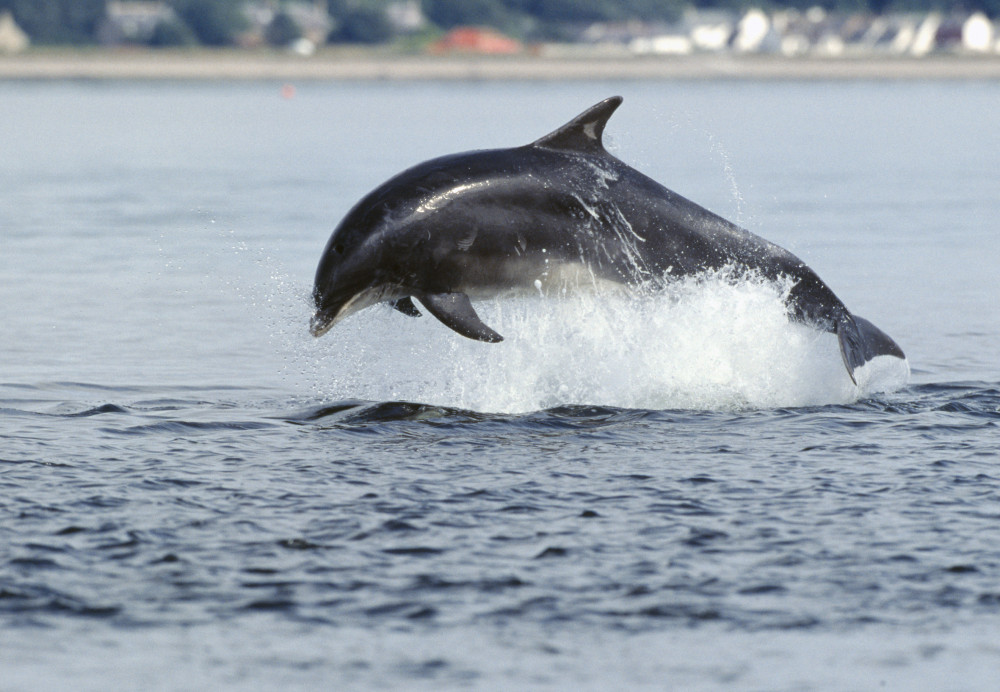Bottlenose dolphin

Status
Native
Population
Below 300 (inshore waters) in British waters
Scientific name
Tursiops truncatus
A bottlenose dolphin may be black, brown or dark grey on its back, with lighter flanks. They have a tall, sickle-shaped dorsal fin and pointed flippers. Bottlenose dolphins are highly social, intelligent animals, and individuals often co-operate in activities such as hunting, baby-sitting and defence against predators. They are most often found in small groups (of two to 50 animals), and alliances and relationships between individuals are complex. They are capable of problem solving and tool-use, and are inquisitive and playful, frequently seen riding the bow waves of ships and large whales.
Length: 3.2 – 3.6m (males are slightly larger than females on average)
Weight: Up to 650kg
Lifespan: 40 – 45 years (males); up to 50 years (females)
Reproduction
Mating occurs throughout the year but in British waters most births are between May and November. A single calf is born after a gestation of about 12 months and is dependent on milk for 18 to 20 months. It may continue to suck for several years while swimming, hunting and social skills are developed.
Diet
Fish (including haddock, hake, trout, bass and sandeels), cephalopods and crustaceans.
Habitat
Inshore areas include estuaries and harbours, with brief forays into fresh water. Bottlenose dolphin are also found in more offshore waters.
Predators
Killer whale and shark predation is less common in British waters than elsewhere.
Threats
Boat strikes and entanglement in fishing gear, pollution and depletion of fish stocks.
Status & conservation
Native. It is a UKBAP priority species and is legally protected in British, Irish and European waters. Habitats in the Moray Firth in Scotland and Cardigan Bay in Wales are designated as Special Areas of Conservation under the EU Habitats Directive.
UK population size & distribution
Several hundred are resident in British waters. Resident populations in the Moray Firth and Cardigan Bay, and commonly spotted off the coast of southern Ireland and southwest England. Two semi-resident groups are found off the UK coast, in Cardigan Bay and the Moray Firth, which have both been designated SACs. Elsewhere, there are smaller groups off south Dorset, around Cornwall and in the Sound of Barra, Outer Hebrides.
Did you know?
Females sometimes act as midwives, helping during births by supporting the mother in the water or by pushing the calf up to the surface to breathe. One individual was observed biting through the umbilical cord.
